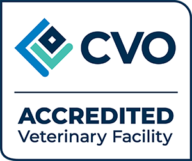
ORAL HEALTH, DENTAL CLEANING and DENTAL SURGERY
Our cats and dogs are susceptible to many of the same diseases we are, especially periodontal disease. In fact, periodontal disease is the most common clinical disease affecting adult pets.
What is periodontal disease?
Periodontal disease is the same in animals and humans. Periodontal disease is the destruction of gum tissue, structures that hold teeth in place and bone that makes up the jaw. Periodontal disease is the result of a bacterial infection that spreads beneath the gumline. Unfortunately, this infection is often not visible to the naked eye. As the infection progresses, the bone surrounding each individual tooth is destroyed resulting in loose and painful teeth. To learn more about the stages of periodontal disease, click here.
How to prevent periodontal disease
Home dental care and routine veterinary dental care are essential to preventing periodontal disease in your cat or dog. Daily brushing remains the gold standard to prevent plaque and tartar and to slow the progression of periodontal disease. In addition, there are diets, treats, chews and water additives that have the Veterinary Oral Health Council seal of acceptance that can be used to assist in preventive oral health care.
Regular veterinary dental cleaning is also important to your pet’s oral health. Dental procedures under general anesthesia allow for a complete oral exam. Tartar and calculus is removed from the tooth surface, each tooth is probed beneath the gumline to asses for pockets, abscesses and bone loss and each tooth is thoroughly cleaned and polished.
Professional Veterinary Dental Cleaning
A professional veterinary dental cleaning is always performed under general anesthesia. A full cleaning under the gum-line where periodontal disease begins cannot be safely and successfully completed in an awake dog or cat. A complete oral exam is performed to identify broken teeth, exposed roots, periodontal disease, dead teeth, infected teeth, abscesses, gingival health and the presence of oral masses. Scaling of the tooth crown (the visible part of the tooth) is performed to remove plaque and tartar build-up. Finally, the teeth are polished leaving the tooth surface smooth, which discourages plaque and bacteria from adhering to an otherwise rough tooth surface.
Anesthesia Free Dental Cleaning
“Anesthesia Free” dental cleaning has become popular due to its perceived safety compared to a veterinary dental cleaning under anesthesia. We all love our pets and want to make the best decisions to keep them safe and healthy. However, when it comes to pet dental health, the risks of periodontal disease and oral health problems due to lack of proper dental care far outweigh the risk of anesthesia.
To learn more about the health risks associated with anesthesia-free dental cleaning, please click on the following links:
College of Veterinarians of Ontario – Practice Standard in Dentistry

